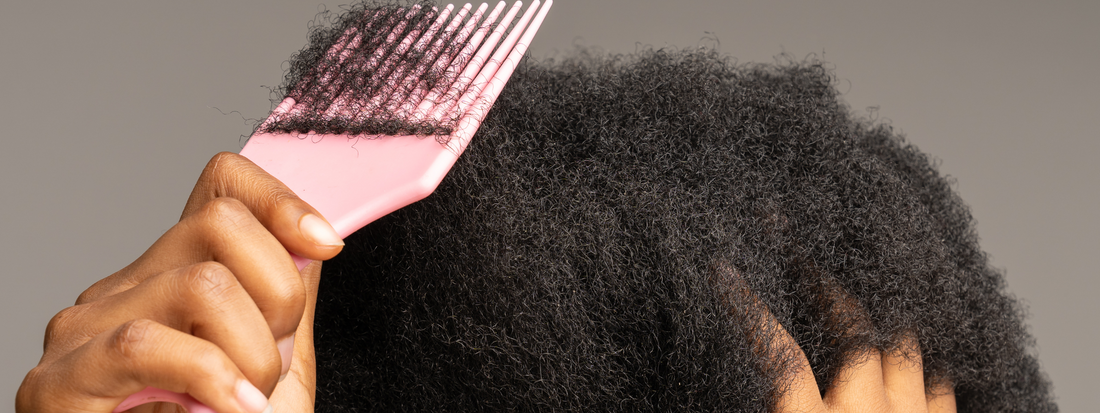
Understanding Single Strand Knots on Natural Hair: What They Are, Why They Happen, and How to Prevent Them
Share
If you’ve ever run your fingers through your natural hair and felt a tiny bead-like knot at the end of a strand, you’re not alone. These pesky tangles are known as single strand knots, and they’re especially common in tightly coiled hair types like 4C. While small in size, they can have a big impact on your hair’s health and growth journey.
💡 What Are Single Strand Knots?
Also called fairy knots, single strand knots occur when one hair strand wraps around itself and tangles. These knots usually form at the ends of the hair and are more likely to happen in natural, coily textures due to the nature of the curls looping and twisting.
Once a single strand knot forms, there’s no detangling it—only trimming. That’s why prevention is key.
🧪 What Causes Them?
Here are the most common culprits behind single strand knots:
1. Shrinkage After Moisture:
When natural hair is exposed to water (like during a wash or spritz), it tends to shrink and curl up on itself. If left unstretched, this shrinkage makes the hair more prone to tangling and knotting.
2. Sleeping Without Protective Styling:
Going to bed with your afro loose—without braids, twists, or a satin bonnet—creates friction against your pillow and leads to tangles. Over time, this becomes a breeding ground for single strand knots.
3. Dry or Poorly Moisturized Hair:
Hair that lacks moisture becomes more brittle and harder to detangle. As a result, it coils in unpredictable ways, encouraging knots to form.
4. Infrequent Detangling or Using the Wrong Tools:
Skipping detangling sessions or rushing through them with the wrong tools can cause strands to wrap around each other and form knots.
🧴 How to Prevent Single Strand Knots
While you can’t completely eliminate single strand knots (especially with very tight curls), you can significantly reduce them with the right care habits:
✔️ Keep Hair Stretched
After washing or applying moisture, put your hair into twists, braids, or band it while it dries. This helps minimize shrinkage and tangling.
✔️ Moisturize & Seal Regularly
Use a rich, water-based moisturiser like the Shema Hair & Scalp Moisturiser, followed by our nourishing Hair Food Butter or Shema Hair Oil to lock in moisture. Well-hydrated hair is more pliable and less likely to tangle.
✔️ Protect Your Hair at Night
Never sleep with your hair loose! Put it in chunky twists or braids and always use a satin or silk bonnet or pillowcase to reduce friction.
✔️ Avoid Over-Manipulation
Too much styling or touching your hair throughout the day increases the chance of tangles. Low-manipulation and protective styles can help your ends stay smooth and tucked away.
✔️ Trim Split Ends When Necessary
Split ends can easily wrap around themselves and form knots. Trimming your ends every few months helps prevent this.
✨ How Shema Hair Luxury Helps You Fight Knots
We encourage users of Shema Hair to wear protective styles when on a growth journey. These styles—combined with consistent use of our Moisture and Growth Bundles—allow for length retention, reduce manipulation, and help you avoid knots before they start.
Our products are formulated with natural ingredients that soften, nourish, and protect natural hair, making it easier to detangle and less likely to tangle.
💬 Note: Our Moisture & Growth Bundles are currently sold out due to high demand, but we’re working closely with our lab to restock. Stay tuned for updates and thank you for your patience!
Final Thoughts
Single strand knots may be small, but their impact on length retention is real. With a consistent routine, protective styling, and the right products, you can drastically reduce them and protect your progress.
Stay moisturized. Stay protected. And always treat your coils with love.
— Team Shema Hair Luxury



1 comment
Very informative!